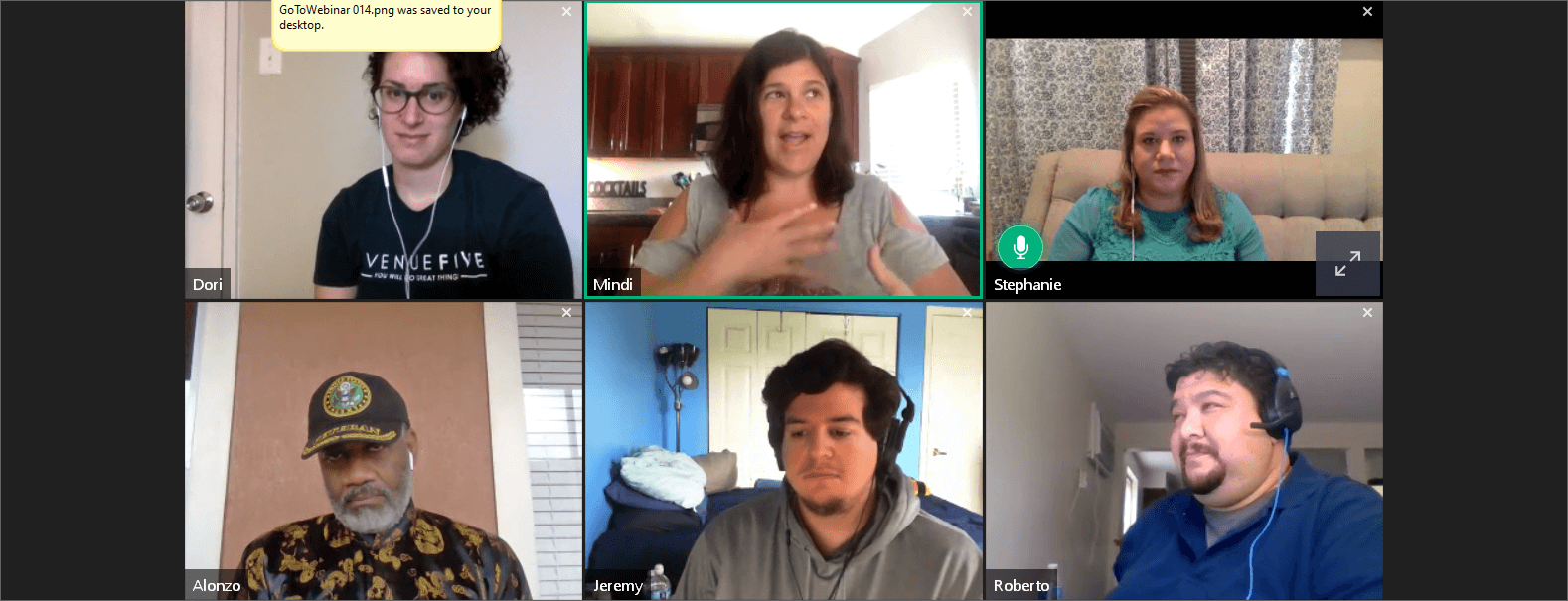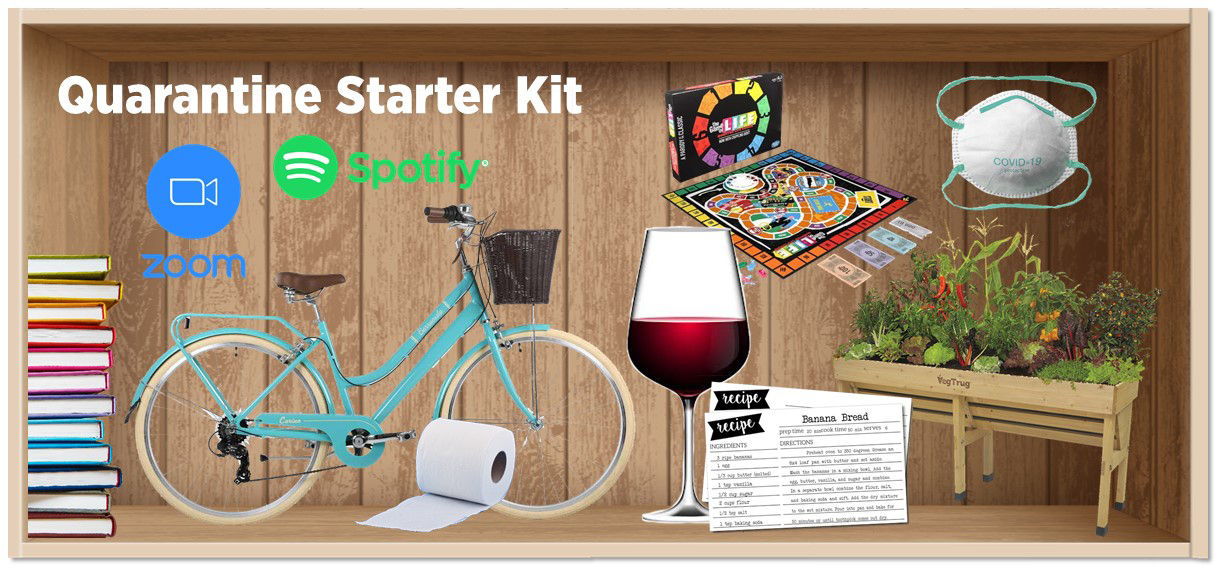
COVID-19 Pandemic: Live Consumer Panel #6 – Five Takeaways
Filed Under: Best Practices, Market Research, Shopper
Casey Sloan
Vice President, In-Person Qualitative Research
On April 30, 2020, we hosted our sixth and final Consumer Roundtable discussion to take a pulse on consumers’ evolving attitudes and behaviors during the coronavirus pandemic. This week we met up with consumers from our first panel (conducted on March 26) to see what’s happened in the 6 weeks since we last heard from them. Here are 5 takeaways of what we learned:
1. The emotional journey that is COVID-19 has been challenging and continues to evolve in week 6
Consumers articulated the emotional stages they have passed through, where they find themselves today in week 6, and what the future might hold…
- Stage(s) they have passed through: fear, anger, resentment, and desperation
- In the initial weeks of the pandemic, consumers revealed a wealth of raw emotions—fear, anger, resentment, and desperation; they were trying to understand and make sense of what was happening and how this would affect their lives on a personal level.
- “Definitely anger. I would say a couple of weeks into it there was a moment. My anger started after the first week of distance learning for my 10-year-old and having to facilitate public school instruction. After a week I felt I couldn’t do this anymore.
- In response—and as we saw in prior panels—much of consumers’ attention was focused on fulfilling basic needs at that point—available shelf-stable foods, safety, and security among them.
- In the initial weeks of the pandemic, consumers revealed a wealth of raw emotions—fear, anger, resentment, and desperation; they were trying to understand and make sense of what was happening and how this would affect their lives on a personal level.
- Stage they are in now: grudging acceptance & underlying tension
- As the weeks have worn on, most have developed established routines and a grudging acceptance that—for now—this is the way life is.
- “I’ve run through all the emotions. There were times I was super depressed, times I’m optimistic. I’m riding the roller coaster now and trying to accept this. The more I don’t accept it the harder it is to deal with.”
- Consumers described home environments with an underlying tension and an uneasy equilibrium that has become more challenging to maintain. They are learning how to coexist with family members in close proximity, and while thriving in this newfound togetherness is the goal, flareups occur; and some have struggled to adapt.
- “I’m getting ready for baby showers and divorces.”
- “Since we were so close for a long time, it’s learning how to deal with your relationship with your spouse. We learned how to communicate better.”
- “It’ll be mom and then son time that he’ll pick something we do. That’s helped tempers from flaring. We’re at the acceptance phase. We’ve gone through all the cycles of grief and we’re ready to endure this through the summer.”
- “It’s gotten harder. Tempers flare more. My son likes to stay in the house and now he’s resentful he can’t get out. I had always wanted to work from home more often and now it’s so frustrating working at home all the time. I enjoy not having the commute, but now I don’t listen to audiobooks. I started out strong on a diet but with all the stress it’s been hard to stick to that.”
- Emotions are particularly acute in situations that normally would allow for communal events, but those are no longer feasible.
- “Our son’s activities are more virtual, drive-by birthday parties and meet and greets. His Cub Scouts are supposed to graduate to the next level, so we’re talking of doing a drive-by celebration and porch-dropping treats.”
- “We were doing ok until a friend passed away and we weren’t able to pay our respects. We had a virtual ceremony where people could come together and talk about the person. I wanted to pass by the house, talk to his wife, but it’s not something we can do right now.”
- As the weeks have worn on, most have developed established routines and a grudging acceptance that—for now—this is the way life is.
- Stage in the immediate future: anxiety & cautious optimism
- Emotionally, many consumers are chafing to reclaim a semblance of what life used to be like—but most anticipate their current lifestyle is likely to last longer than initially expected.
Those in Texas and Arizona expressed anxiety about their states opening up in May and how the initial phases will play out.- “Mayhem. Texas is opening up tomorrow. It’s an uncertainty that I’ve had through this whole thing. I’m typically a low stress person. I’m anxious to get back to my class work. But I’m nervous for the future.”
- I feel like I’m accepting the life we’re living right now. We have space and property. But once things start to open… people will go to the movies and restaurants. I feel scared of how that will affect our community. I have anxiety and fear for the future.”
- “I’m in AZ and we’re opening in 2 weeks and I don’t know what that means. There needs to be more compromises like maintaining distances while still doing stuff. I don’t know how this can be the new normal.”
- Emotionally, many consumers are chafing to reclaim a semblance of what life used to be like—but most anticipate their current lifestyle is likely to last longer than initially expected.

2. Consumers are embracing new hobbies, habits, and family roles during the pandemic.
As the pandemic wears on, consumers are reassessing what is important in their lives, how they spend their time, and what, ultimately, gives them joy and meaning. For some, this reassessment was a natural by-product of having excessive downtime; for others, it was forced upon them by necessity and their current situation. Regardless, consumers are thinking and acting in new and interesting ways—creating a unique opportunity for companies and their brands to gain consideration.
- Some consumers are embracing new hobbies and activities, such as developing a new exercise regimen, taking on a virtual personal trainer, or growing a vegetable garden for the first time.
- “My best friend’s a personal trainer so I had her write me a program to strengthen my arms. I started doing those once or twice a week and more yoga videos. I can’t use this crisis as an excuse.”
- Others are experimenting with new ways of entertaining themselves or relaxing to lessen the stress in their lives, such as trying new recipes or watching a new show, or reading a new book; and some of these activities are even shared with their kids.
- “I’m also trying recipes I’d never try; Disney released recipes I’d try. I’d never have tried to make a churro before, but I have! I’m baking because I have the time. Everyone is posting pictures and they make it look so easy so I thought I’d try.”
- “We’re reading a bedtime story every night. I picked Little House on the Prairie because that’s part of my acceptance about this.”
- Some have assumed new roles and responsibilities in the home, such as switching-off childcare with their partner or having other family members helping out with the cooking.
- “We’re cooking as a family 3 meals a day. My son’s learning to cook. My daughter is doing small things, stirring. My husband wants to know exactly what to do. I have a meeting a few times a week and he has to cook. It’s encouraged us to find new recipes to use…”
- “My 10-year-old has become more of a babysitter for the 2-year-old. My husband is working from home and I have meetings; so he’s a caretaker to the 2-year-old. More flexible with roles and hat wearing. All-hands-on-deck; you do what you can working together.”
3. Consumers continue to find silver linings in the community that provide hope and inspiration—but the wrong message from an advertiser can be a turn-off.
- Consumers suggested the pandemic has turned a mirror on society, giving them a greater appreciation of our common humanity. The collective sense that we are all in this together is growing stronger, enabling consumers to be more resilient. And technology continues to expand the meaning and boundaries of “community.”
- Brands that reinforce the theme of community are giving back and are proactively trying to be part of the solution (e.g., adjusting their manufacturing to make products that are useful for the public good) stand to generate brand affinity. Conversely, consumers distrust brands that come off as being less authentic—or worse, as opportunistic—in using the pandemic as a mere talking point.
- “I know more of my neighbors now since I go for a walk. I wave to them. That’s given me another sense of community I wouldn’t have gotten without this.”
- “That sense of community and seeing how people are pulling together and being creative has been incredible to watch. That’s showing some gaps and needs, but it’s also bringing the community together in ways we’ve never seen before. I see that people are generally good. I’m a former emergency medical services worker, so I have a jaded view of society. So to see that society is pulling together is fun to watch.”
- “Insurance companies are giving back to their people. They’re trying to be part of the solution which is definitely speaking to me. Even local advertisers doing family meal specials, so people don’t have to cook, those are more appealing to me.”
- “A lot of ads used Coronavirus as an ad technique; I didn’t want to contribute to that. I would contribute to the ‘buy one mask we’ll donate another.’ I saw something about companies using resources to make ventilators and that’s what I’m taking notice of right now.”
- “I saw some commercials saying you should support local restaurants and they’d waive the delivery fee which was cool. Then I saw a car vendor saying they understood what we were going through and would give 3 months to make a payment on a new car. That was laughable.”
4. The window to convert new customers to your brand may be narrowing as the disruption to regular grocery shopping routines is dissipating.
- Overall, in week 6, shoppers continued to leverage a variety of brick n’ mortar retailers and online grocery services to minimize time-in-store.
- Smaller-format stores are often viable, higher-stocked, and lower-trafficked options to big box retailers.
- “When this first started, I tried to go to bigger stores, Walmart, Target, Jewel because I thought they’d have more products. I was wrong. The neighborhood store at 7:30 in the morning has everything. It’s not so full. I’m in and out in 15 minutes.”
- Many have become more proficient in leveraging online grocery shopping (click & collect or delivery), and they suggested they will stay with these services, post-virus. Some have discovered new products and brands via substitutes that these services select when their regular brands are not available.
- “I discovered Instacart 6 weeks ago because Walmart curbside was always booked. I find myself doing 1-week Instacart from Sam’s Club, and then the next week Walmart. I’ve staggered orders instead of 2 orders a week. I have a better idea how to do those things now.”
- “I have learned how to grocery shop online. I used to never do that because I like touching boxes and reading labels. Now, I can’t see a future where we’re touching things. The few times I’ve gone to the store I don’t want to touch anything. I enjoy the simplicity of shopping at home and researching everything. I’ve retrained my brain to be an online picker.”
- “I’m letting other people do my shopping, so I’m more inclined to say you can substitute if what I selected wasn’t there… I’ve let my pickiness go to the wayside, so I’ve discovered new brands. My son gets to choose a new snack each week. I’ve never purchased Nutella before; we now have Nutella in our house and he’s ecstatic. I’ll stick with it.”
- Importantly, the chaos that was grocery shopping in the initial weeks of the pandemic—the panicked stockpiling, routine out-of-stocks, and random experimentation with new fulfillment services and products—seems to be settling. Consumers are seeing more stock on shelves in week 6, including paper goods. Perhaps because of this, consumers’ purchasing criteria seems to be slowly moving away from simple availability and shelf-life, and reverting to traditional criteria such as brand preference, value, quality, taste, and nutrition.
- “The stores around me have had a lot more stock than at the beginning … I wasn’t stockpiling but I was getting a bit more than I needed. I am still doing that a little but not like before. I haven’t seen the limit 4 per customer signs lately like in the beginning. Most of the time I can get the brands I want.”
5. The “New Normal” is yet to come
- In assessing the effects of the pandemic in week 6, consumers see themselves in a transitional phase—not having arrived at what they anticipate will be a true “new normal.” They perceive the legacy of COVID-19 to be, among other things, one that will fundamentally alter how and where we work, as well as work/life balance. In the “new normal,” employers will accept—and actively champion—working at home and be more trusting of these arrangements as productive work environments.
- “It’s the present normal. I don’t think this is the ‘new normal’. I don’t think we’ll be comfortable until the vaccine comes out.”
- “This is going to be a hybrid of our ‘new normal’. We know so many people can work from home. It’s not always ideal, but maybe the bosses will recognize if you have a sick kid, plug in and work from home and it’s not a sick day. So hopefully we’ll see more working remotely.”
- “There will be a pendulum swing. We focused a lot on collaborative spaces. My company announced they’ll be doing hybrid work at home/in office. There will be more tolerance for ways to collaborate other than working closely in the same room.”
- Consumers stressed that companies should continue conducting consumer-based research in anticipation of this “new normal.” They sense that certain facets of our lives will continue to change post-virus and encouraged companies and their brands to take advantage of this opportunity to understand these evolving changes and how to better meet their needs.
- “Business and life move on. In order to get products for us, participating in market research is important, so companies can start tailoring things to what the ‘new normal’ will be in the future.”
- “Absolutely. These are uncharted territories. The market research in the past wasn’t relevant, but we’re looking for changes in the next couple months. The state we’re in now is imperative for future consumers.”
- “On the internet, it’s made everything more global or national. It’s on a wider spread so this allows for sharing of those ideas across different areas.”
C+R’s Take:
- Be smart with marketing. Consumers appreciate hearing about brands that are giving back during this time, such as adjusting their manufacturing to make products that are useful for the public good. However, brands that are advertising now and using the pandemic as a talking point—as opposed to those that show their brand as an active part of the solution—are losing respect. What is your brand doing at this time? Do you have news worth sharing with consumers?
- Help consumers find some me-time. While togetherness and family time have been a bright spot throughout the pandemic, consumers now are struggling with the pressure of being constantly with their families. How can your brand support their individual needs, help them relax/put them at ease, and enable them to get a moment for themselves to recharge?
- Convert new customers while you have the chance. This is a time of forced changes within consumers’ lives. Consumers are discovering new ways of grocery shopping and products that they plan to stick with after the pandemic. They’ve embraced new hobbies and roles within their families. However, the disruption from earlier in the pandemic is starting to dissipate. How can you get your brand in front of consumers while they are still in this open mindset?
- Stay engaged with consumers. While consumers have settled into some routines, they feel the “new normal” hasn’t yet arrived. Now more than ever, it’s important to stay abreast of consumers’ latest attitudes and preferences. C+R can help with our Flash research solutions.
explore featured
Case studies

